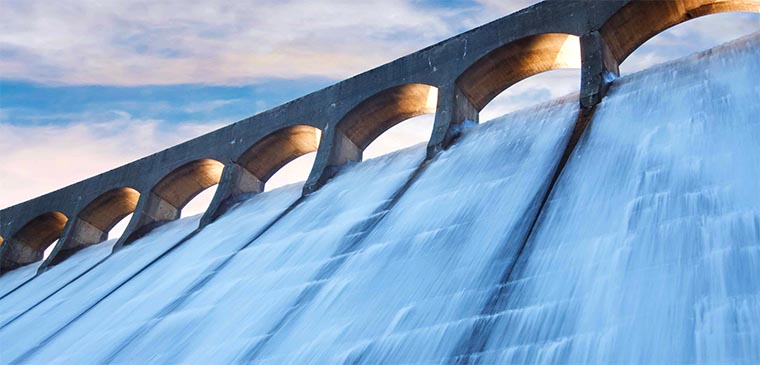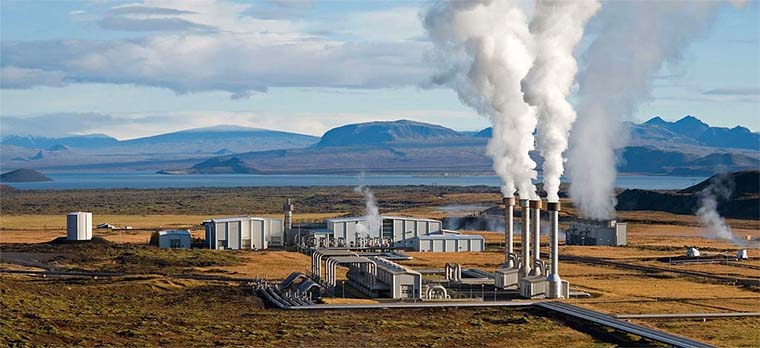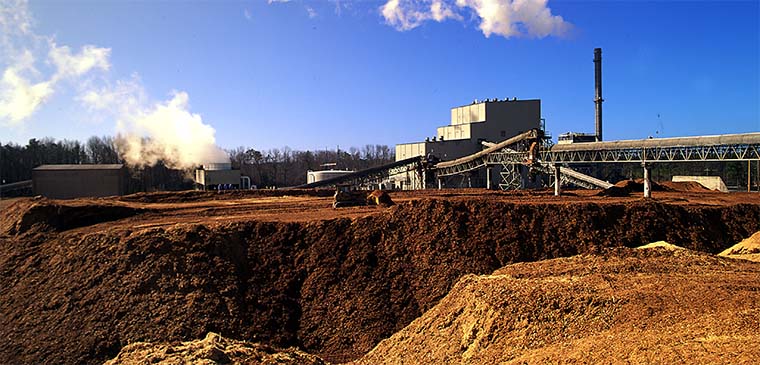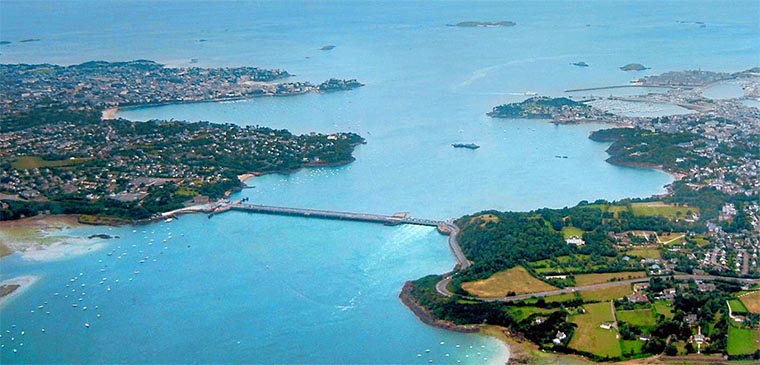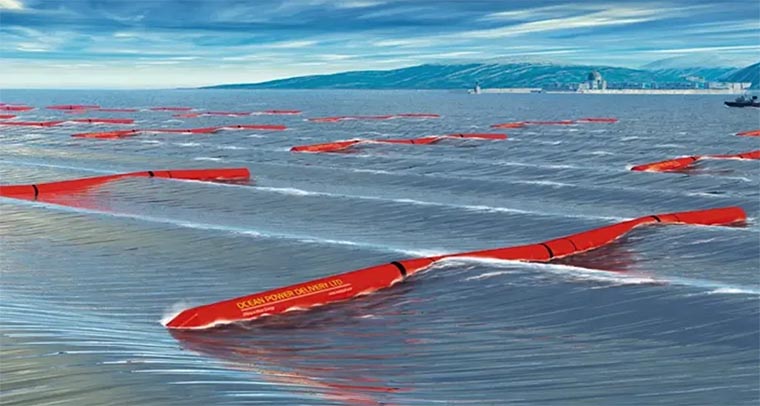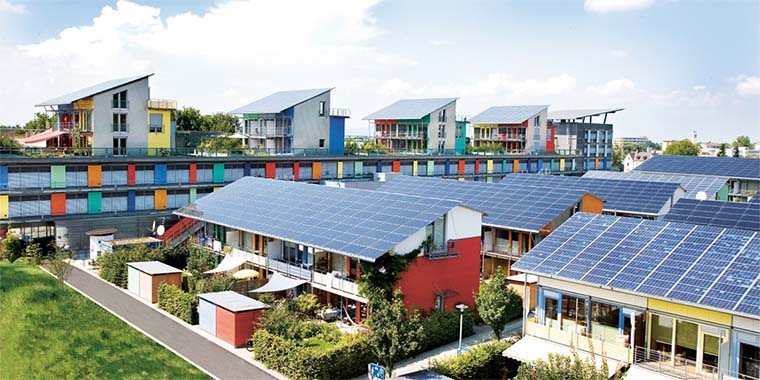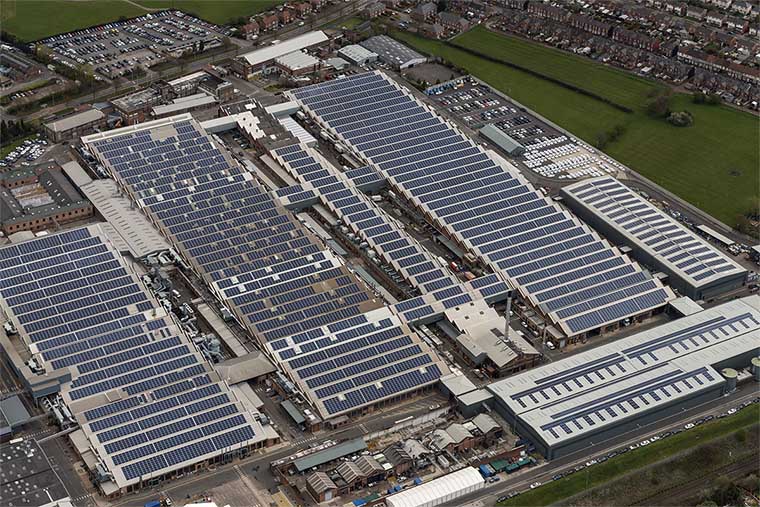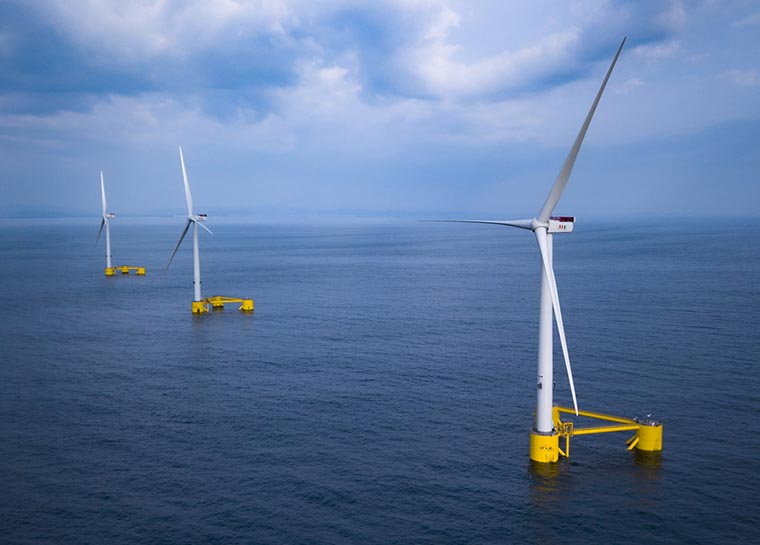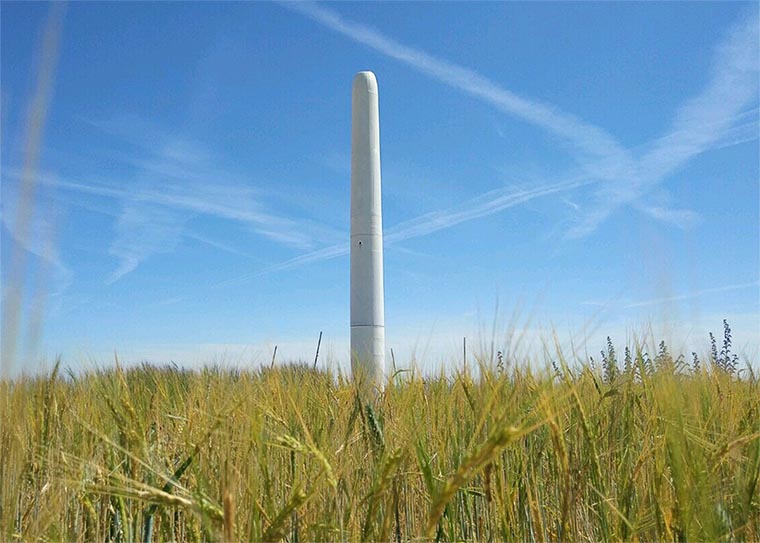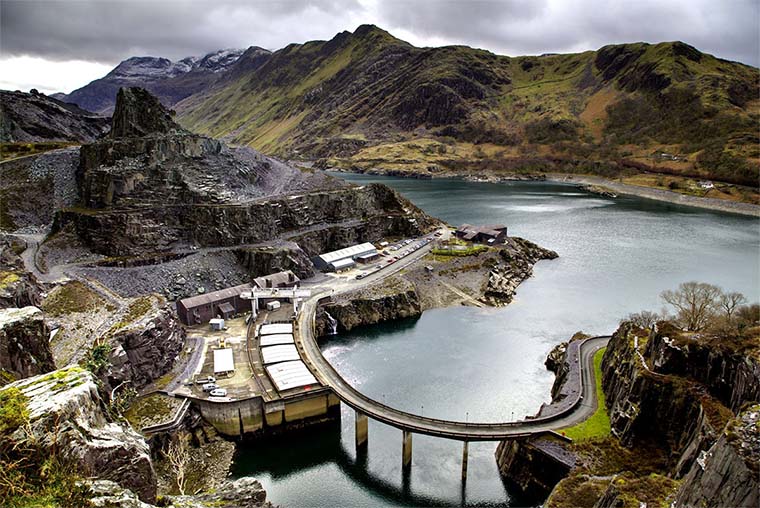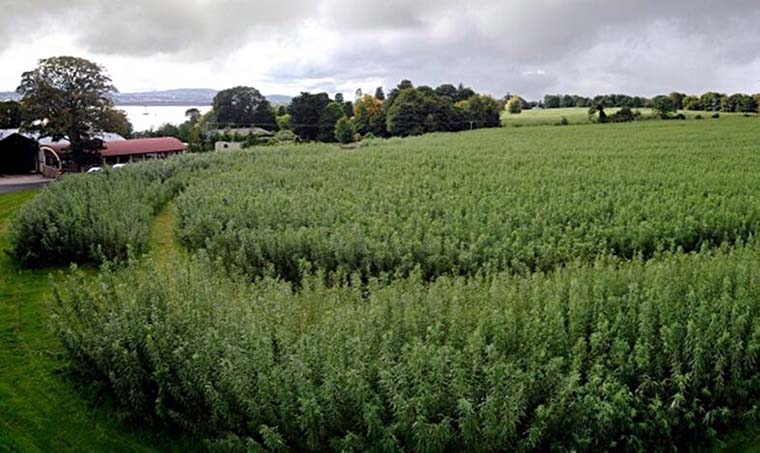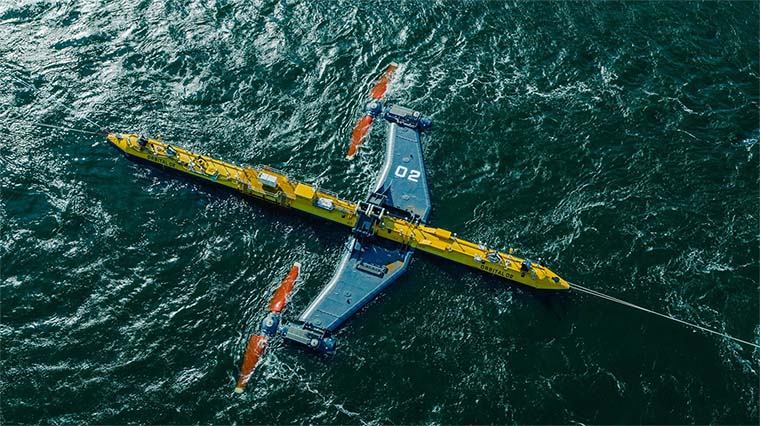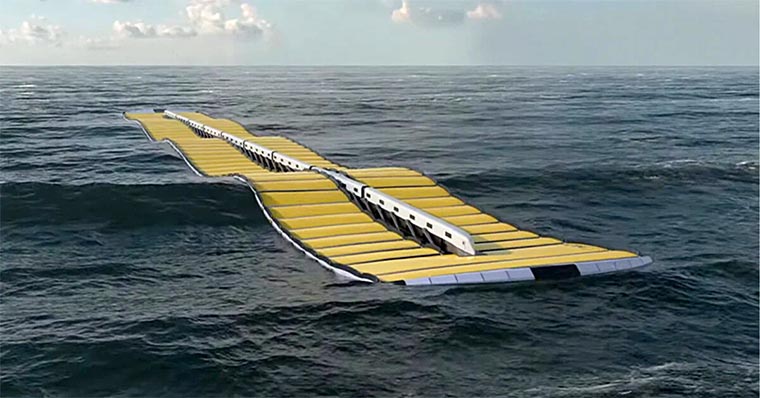
Renewable Energy: What are the options?
The Bute Energy/Green GEN Cymru proposal for energy parks and their associated pylon lines is promoted as a necessity to provide renewable energy as a solution to climate change.
Do we need renewable energy? ..... YES, absolutely we do!
We only ask that it should be developed in a measured, informed and fair manner.
The “pylon problem” - the need for new and often landscape defacing electricity transmission routes, is potentially common to any energy sources but considerably influenced by the choice of renewable type, size and location.
But what exactly is renewable energy? What are the options?
There is a much more to this question than meets the eye! Bute Energy's focus is largely on electricity generated by onshore wind power, along with some solar. However, that is far from the whole story! There are a range of different types of renewable energy sources and different ways capture them. We will certainly need a mixture in order to replace our dependency of fossil fuels.
By definition "renewable energy" is energy derived from natural sources that are replenished at a faster rate than they are consumed. This is in contrast to energy from “fossil fuels”, predominately coal, oil and gas, which powered the Industrial Revolution and remain by far the dominant energy sources today. Fossil fuels are also natural but their formation occurs over geological time, many millions of years. By human scale they cannot therefore be regarded as renewable.
The big problem is that burning fossil fuels for energy produces high levels of harmful emissions. Also of course, although the reserves are huge, they will one day run out.
Renewable sources are less polluting and plentiful, sun, wind and water, but turning them into usable energy is challenging and requires mechanisms that to a greater or lesser degree consume resources. Sometimes those resources are rare or expensive, even environmentally damaging. It needs careful balance or the solution might be worse than the problem!
Here is an overview the main sources of renewable energy with the Good and the Bad points - you can make up your own mind about the Ugly!
Some types of renewable energy:
It could be said that ultimately all our energy comes from the sun. Solar energy capture can be either "passive" or "active". Passive uses sunlight naturally, for example by designing a house so it makes best use of the warmth and light. Active solar captures the energy in the sun’s rays either as heat or by photovoltaic (PV) systems to produce electricity.
Direct solar water heating is very effective and has been used extensively in Mediterranean countries and elsewhere.
However, these days most interest is in PV systems to generate electricity on both small and large scales. PV cells convert the energy in light into direct current (DC) electricity. For grid connection or feed into mains circuits, the DC supply is then converted to alternating current (AC) by a device known as an inverter. Most PV cells are manufactured from crystalline silicon and mounted to make a panel. Solar panels may be wired together to form an array.
Solar PV panels have huge potential for community based power schemes. They can be rooftop mounted on many existing buildings or as medium sized arrays in relatively inconspicuous positions local to where the electricity would be used. This could dramatically reduce the need to build large solar farms, or other energy parks, in valued rural landscapes. This approach is being promoted by the Campaign to Protect Rural England (CPRE) and others.
The Good
PV cells have become relatively cheap to produce and increasingly efficient.
Solar PV cells have the considerable advantage that their use is scalable from tiny units to large arrays for grid electricity generation.
Solar installations have no or few moving parts therefore are low maintenance and have a long life span.
Small to medium sized PV panel arrays can be safely installed on existing buildings and other structures, therefore occupying no additional land space and minimising the need for grid upgrades.
Domestic solar panel installations can easily be connected to the main grid to feedback any excess electricity for general use.
The Bad
The biggest disadvantage is obvious, only produces peak energy in good sunlight and none at all at night. Alternative sources will always be needed.
Large scale solar installations (Solar Parks) need a lot of land space.
Large solar parks have a strong visual impact which may not be desirable in some landscapes. They may also need new transmission lines for grid connection.
The materials used and manufacture of solar equipment have some environmental cost.
Domestic installations are still fairly expensive, although costs have reduced a bit. The long payback time discourages more widespread uptake by private house owners.
Possibly the most visible of renewable energy sources and already well established. Uses wind turbines to capture the energy of air flow to produce electricity.
Most turbines are of the horizontal axis design, typically with 3 large blades (HAWT). Another type is the vertical axis turbines (VAWT) and the newer designs of have some technical advantages that may enable more flexible deployment.
For grid generation turbines (HAWT's) are made as large as possible because generally speaking they produce more power for the cost. However, small turbines exist and for example are quite commonly used on boats.
Turbines need to be located where there is good and constant wind strength. For onshore installation this usually means areas of elevated altitude are favoured. However, the best performance is obtained from offshore turbines as although they cost more to install and maintain, the wind speeds are higher and more constant.
There is no doubt that wind turbines are a good and necessary source of clean electricity generation, but location planning is crucial for acceptable deployment.
Although conventional turbines dominate there are some innovative designs that offer the promise of devices that are more adaptable. These might be attractive for installation in urban or sensitive areas, near to where the power is needed. However, as new or untested technologies many have not yet attracted major investment funding for production and deployment. Examples are the Halcium Powerpod and the O-Wind Turbine. An interesting alternative to turbines also still under development is the Vortex Bladeless energy system invented by a small Spanish company. With no blades at all it captures wind energy by the oscillation of a lightweight vertical column, making it noise free and harmless to wildlife. These new and radical devices often have relatively low power output, but could be cost effective for domestic use or when connected in groups.
The Good
Wind turbines are a well proven and well understood technology.
For large scale electricity generation turbines have manageable running costs, though not insignificant.
Turbines do not rely on any additional power input to operate.
Turbines have a small land footprint, much less than the air space of the rotors. This enables continuation of agricultural activity and also gives opportunities for installation on brownfield sites.
Further development of floating offshore turbines will reduce construction and operating costs which could enable deployment in deep sea locations.
New inventions might allow wind energy capture by small scale installations, comparable to solar panels.
Due to the known and available technology they are an attractive option for planners and investors (is this good or bad!).
The Bad
The biggest practical problem is that wind strength is notoriously unpredictable. Turbines do not provide reliable power production and will always need to be supplemented by other sources.
Large turbines make surprising little noise, but the sound they do make has a variable pattern, known as amplitude modulation, which many people find intensely annoying.
In bright sunlight turbines can create “shadow flicker”. This effect can be annoying, but seriously dangerous for a few people.
Large turbines are imposing structures that need careful positioning. People do not want to live near them, but they are visually intrusive in wild natural landscapes.
Wind turbines are known to be harmful to wildlife, migratory birds and bats being especially at risk.
The materials used and manufacture have some environmental cost, plus a transport overhead for large components.
Installations with many large turbines (energy parks) are often installed in low population locations remote from where the power is needed and therefore new transmission cables and towers (aka, pylons!) are required for distant connection to the grid.
Hydroelectric power captures the energy of moving water by using a turbine rotated generator. It is already used extensively in many countries and worldwide produces more power than all other renewable sources combined and also more than nuclear plants.
There are broadly three types of hydroelectric plants. The largest use a reservoir and dam to provide a controlled flow of water to the generators. These are often on a huge scale. Another type, generally much small scale, does not use a reservoir but places the generator turbine either in the direct flow of the water coarse or a diverted channel. They are therefore know as diversion or run-of-the-river plants. The third type is pumped-storage, where water is pumped to a higher level pool or reservoir using excess electricity of low demand periods, then releasing the flow to generators when needed.
The Good
Once operational hydroelectric plants are a very effective method of producing high levels of power with almost no damaging emissions.
Hydroelectric has an advantage of many other renewable sources because it produces predictable and consistent power, which can be modified according to demand.
Relatively low cost to operate, after the construction phase has been completed.
Reservoirs used for hydroelectric are often multi-purpose, for example providing drinking water supply.
The Bad
The major limitation for its use is that it requires specific geographic suitability.
Construction of large dams and resulting upstream flooding can have very serious environmental consequences.
Dams may have a lasting effect on the ecology of the entire river system and surrounding land.
Flooding for new reservoirs has involved displacement of resident people, numbered in millions worldwide (a small hydroelectric plant runs below Llyn Celyn - Cofiwch Dryweryn!).
Potential downstream risk, as recent history shows, the results of a large dam failures are devastating.
In many cases hydro generator turbines routinely kill large numbers of fish and other water life.
Some possibility of water shortage due to to seasonal or long term drought, a problem becoming more apparent with effects of climate change.
Planet Earth is hot in the middle! Geothermal energy captures heat from within the Earth’s crust to provide useful heating at the surface or electricity generation.
In certain places this occurs naturally and has been exploited since ancient times. This has usually been in the form of water from hot springs, used for bathing or to provide heating for buildings.
Where heat is accessible relatively near the surface, mostly in regions known for volcanic activity, is has been possible to generate electricity by feeding hot water or steam through turbines. More recently drilling and pumped extraction has enabled the construction of geothermal power stations in wider geographic areas. There are several different power plant types in use, suited to the available temperatures and conditions, for example dry steam, flash steam and binary cycle.
Some countries have considerable future potential for geothermal power, such as Canada. In the UK opportunity is limited although there is some possibility in certain locations, more likely for direct heat extraction than electricity generation.
The Good
Once commissioned the power available is constant.
The plants do not occupy excessive land space and have generally low environmental impact.
the Bad
The viability of geothermal is largely dictated by geology.
The initial capital costs for installations tend to be very high.
There have been some concerns of potential interference with natural seismic processes and land stability, though specific to local conditions.
Note: The term Geothermal is commonly used for Ground Source Heat Pumps (GSHPs) though technically incorrect. GSHPs provide a form of heating that takes advantage of the fairly constant temperature of the ground at depths ranging from 2 metres down to about 200 metres. This surface layer is in fact heated by the sun not the Earth’s core, so is therefore a form of solar heating. Together with Air Source Heat Pumps they are promoted as an environmentally friendly heating method and alternative to fossil fuels. Both require electricity power to operate.
Biomass, or sometimes Bioenergy, is a rather broad term referring to energy derived from natural organisms either living or recently dead. It includes the generation of heat or electricity from biological sources and also the production of alternative fuels such as biodiesel and bioethanol. This very loose definition means it encompasses a confusingly wide range of source materials and methods of energy production.
It could be validly said to include the traditional burning of wood for heat, perhaps the most ancient form of energy production. Considering that it’s frowned upon by many environmentalists and politicians, is that a renewable source? Yes, of course it is! Burning wood as fuel is good or bad depending on where and how it is done. Indiscriminate deforestation for any reason is very bad, but heating a rural home by gathering logs from a well managed woodland should at the very least be “carbon neutral”.
Biomass can be composed directly or indirectly of many plant derived materials - wood and it’s by-products such as sawdust and woodchips, agricultural residues including straw and organic waste as well as organic industrial and domestic waste. Some biomass is grown as a crop from specific plant species. They include woody plants, grasses and other agricultural crops. Examples are willow, maize, sugarcane, miscanthus and hemp but there are many others.
Biomass can be burnt to create heat, which in turn can be used to generate electricity in similar way to burning fossil fuels.
Biomass can also be processed by chemical conversion or fermentation to produce energy fuels. The best known are biodiesel and bioethanol. Fermentation or composting also produces biogas which can be used in the same way as fossil fuel gas.
An evolving and potentially extremely important biomass is the cultivation of algae, most especially what is known as microalgae, which are tiny phytoplankton found in both fresh and salt water. In suitable conditions they grow much faster than land based plants. Like other plants, microalgae use photosynthesis to absorb carbon dioxide and produce oxygen. It is estimated that microalgae are responsible for about half the oxygen in the atmosphere. Algae have a high natural oil content and can produce biodiesel or be refined to make butanol which is a petrol substitute with fewer side issues than ethanol. Biogas can also be produced.
The Good
Most opinions claim less harmful emissions from burning biomass compared to traditional fuels. This may in part be due to biomass power plants being of newer design, more efficient and better at controlling the emissions.
Biomass helps reduce waste that would otherwise go into landfills.
Biomass is often a by-product of other activities such as food production or forest management.
Fuel supply in the form of organic materials and household waste is usually widely available at low or no cost. It is a versatile resource.
Biomass fuels are generally carbon neutral, having absorbed CO2 by photosynthesis.
Biomass power stations reliably produce constant electricity.
If the bulk production of algal biofuels is developed economically, then they could replace fossil oil fuels without requiring radical changes to engine technology.
The Bad
The burning of biomass fuels still produce polluting emissions.
The burning process is not always efficient, sometimes needing combustion assistance.
Biomass crops take up a lot of space, some of which might otherwise be used for food production.
Badly planned or unscrupulous cultivation of crops could result in deforestation.
Operational costs can be very variable, partly dependent on transportation overhead of the fuel. The bulky fuels may also be expensive to store.
Construction of new, efficiently designed power plants is expensive.
Tidal energy is powered by the natural rise and fall of ocean tides and the currents created by this movement of water. The ebb and flow of the tides is continuous and predictable, driven by gravitational interaction between the Earth and Moon.
Although there are seasonal and geographic fluctuations the movement of tidal water is potentially a reliable, inexhaustible source of renewable power. Yet it is not widely used compared to other renewables. There are few large scale installations generating electricity. Notable examples are in France and South Korea, but the world’s largest planned installation is in Scotland, partly operational but still under phased construction.
The biggest obstacles are cost and technical challenges. Tidal power involves developing technologies and at the moment initial costs are always relatively high. The sea is a harsh environment to operate in, requiring structures and equipment to be very robust and able to withstand salt water conditions.
The are several approaches to capturing tidal for electricity but essentially they use turbines either in the natural tidal stream or employ a large barrier structure to direct the flow, For tidal stream the turbines may be fixed to the seabed or attached to a floating barge, but location is important. Controlled flow is achieved by constructing a barrage across a tidal estuary, so that when the tide drops the water can be channel through the turbines. The concept of a tidal lagoon is similar but with an artificially constructed reservoir. A new and unproven theoretical option known as Dynamic Tidal Power, proposes a very long, open dam-like structure straight out into the sea so that the tide causes a difference in water level either side, enabling flow through the turbines.
The Good
The advantage of tidal power is clear, a limitless resource that if correctly and widely implemented could potentially on its own provide enough clean power for much of the world.
Power availability is predictable and in most cases continuous.
The potential energy output from tidal turbines is very high, due to the comparative density of water.
In many cases installations have little visual impact or is a comparatively acceptable change to the coastal landscape, in contrast to wind and land-based resources.
New and improved designs for tidal stream devices offer the promise of much cheaper and easier deployment.
The Bad
The effectiveness of tidal generation is very dependent on geography (however Wales and the UK as a whole has some of the most suitable tidal waters in the world).
Construction of large projects, manufacture and operation of equipment has environmental costs, in some instances quite significant.
Barrage systems can disrupt the natural flow around estuaries and coastlines, with various consequential effect such as silting, beach and dune erosion leading to habitat changes.
Barrages may block shipping access, requiring construction of sea-locks.
There are concerns about the impact on marine and estuary wildlife caused by the turbines. Damage mitigation methods need more research and development.
The high construction costs makes tidal less attractive to financial investor than wind or solar.
The movement of waves at the surface of oceans and large lakes have considerable power. The waves are created by winds blowing over the water and to some extent may be influenced by tidal flow. Similar to tidal, if fully harnessed wave power could potentially provide the energy needs of much of the world.
However, wave power capture is very much an evolving technology. Implementation is in its infancy and consists mainly of trial projects. In common with tidal power it suffers the same problems of high cost and technology challenges, so does not attract investment as easily as land-based renewable energy.
Although surface waves are variable and dictated by wind and weather conditions, the water of the oceans is in constant movement. Wave power is therefore constantly available and capable of providing a reliable and inexhaustible energy source.
There are a number of different methods to capture wave power but they all use devices known as a wave energy converter (WEC) and broadly fall into three types: oscillating body, oscillating water column and over topping device. The later two often use turbines to take advantage if differences in water height while oscillating body devices capture the up and down movements of waves. However, there are many differing designs and currently no dominant single technology.
An interesting example, at the very least demonstrating the possibilities, is the concept from Sea Wave Energy Limited (SWEL) a Cyprus and UK based R&D company who have attracted much attention although no further than the prototype stage. Their radical design is a floating device they call the Waveline Magnet which could be cheap and simple to deploy, with the aim of producing very low cost electricity while at the same time being friendly to the marine environment. They have tested a working prototype and are seeking investment partners to enable production.
Advantage and disadvantages have much in common with tidal.
The Good
The potential is enormous - constant, reliable, clean energy.
Available anywhere there are oceans, seas or large bodies of water
Little visual impact, with most devices at the water surface only and where a land station is required then it does need to be large.
Unlike some tidal, wave energy capture does not use large barrages, dams or lagoons.
Most systems have little of no impact on marine wildlife or habits.
The Bad
Development, research and construction costs are high, often with no guarantee of returns for investors.
The technology is not mature.
Devices and equipment must be capable of withstanding harsh sea conditions.
Long term mooring and anchoring systems for devices may cause some environmental damage, needing assessment and careful design.
Some environmental costs are involved in manufacture, transport and operation, though typically they are relatively low.
The UK government along with many other countries are saying that nuclear power is a green, sustainable power source and are keen to put loads of money into it in order to reach “Net Zero”.
So is nuclear a renewable source? No it is not! Nuclear fission power plants run on a uranium isotope called U-235, which is extracted from more plentiful mined uranium ores. Some spent uranium-235 can be recycled but it is not renewable.
Nuclear is labelled as green because the electricity generation process itself does not emit harmful greenhouse gases, it is also relatively low cost once operational. But the construction of power stations, operation and transport cause emissions to the atmosphere. Furthermore nuclear power stations tend to be very large and complex. They take a long time to build, about 10 years, and are very, very expensive!
The other well known cost issue is the safe disposal of spent nuclear material and radioactive waste. This a huge problem because it is extremely toxic and remains highly radioactive for tens of thousands of years. Disposal is unavoidably expensive and involves environmental costs such as encapsulation materials and transport, plus the big question of the long term environmental damage that may be caused by its storage. Most of the world’s nuclear waste is currently in what can only be described as high maintenance, temporary storage. No one has really solved how to genuinely dispose of it permanently.
Apart from financial cost there is the difficult subject of long term safety and security. The effects of past nuclear power station accidents are well known, so this is not a theoretical risk. In an unstable world there can be no guarantee of long term security. Europe’s largest nuclear power plant is Zaporizhzhia in Ukraine, which is currently under Russian military control in the middle of a war zone - the risks are clear!
Nuclear energy could be seen as a “quick fix” substitute for fossil fuels to enable the reduction of emissions but at considerable overall cost - financial, environmental and social.
Nuclear physics is a fascinating topic and properly the province of scientific research. In particular the highly challenging development of nuclear fusion (as opposed to fission) might offer a much safer future energy option.
click images for larger view
United Nations - what is renewable energy
National Geographic - renewable energy explained/
Our World in Data - Renewable energy
The Guardian - Use England’s brownfield sites for windfarms
UK Government - Wind turbine shadow-flicker evidence (PDF)
First Hydro, Dinorwig Power Station
Vortex Bladeless . . . or watch on YouTube
MeyGen tidal energy project, Scotland
Sea Wave Energy Ltd . . . or watch on YouTube
National Geographic - Nuclear fusion as the future of energy


